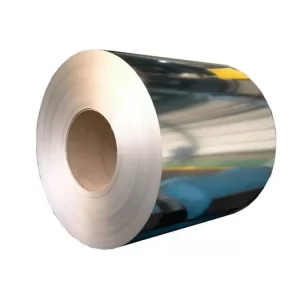What is 316L stainless steel used for?
In the vast realm of engineering materials, 316L stainless steel stands out as a premium alloy renowned for its exceptional corrosion resistance, high strength, and remarkable versatility. This low-carbon version of the popular 316 stainless steel has found its way into numerous industries, becoming an indispensable component in the design and manufacture of a wide array of products.
1) Healthcare Sector
In the healthcare industry, hygiene and safety are paramount. 316L stainless steel is the material of choice for medical implants, surgical instruments, and equipment due to its ability to withstand frequent cleaning and disinfection without degrading or releasing harmful chemicals. Its low carbon content minimizes the risk of carbide precipitation, reducing the chances of sensitization and associated corrosion in the presence of bodily fluids. Furthermore, its biocompatibility ensures that it doesn't elicit adverse reactions in patients, making it ideal for applications such as orthopedic implants, pacemakers, and stents.
2) Marine and Coastal Environments
The harsh conditions of saltwater and marine environments pose significant challenges to metals. 316L stainless steel's enhanced resistance to chloride corrosion makes it the perfect material for marine applications, including shipbuilding, offshore oil and gas platforms, and coastal infrastructure. Its durability ensures that structures remain intact even under the relentless assault of waves, tides, and salt spray, significantly reducing maintenance costs and downtime.
3) Chemical Processing
Chemical plants and processing facilities rely heavily on materials that can withstand exposure to corrosive chemicals and extreme temperatures. 316L stainless steel, with its resistance to a wide range of acids, alkalis, and other corrosive media, is an excellent choice for tanks, piping, valves, and pumps in such environments. Its stability under high-temperature conditions also makes it suitable for processes involving steam or hot chemicals.
4) Food and Beverage Industry
Hygiene and non-reactivity are crucial considerations in the food and beverage industry. 316L stainless steel's smooth surface and corrosion resistance facilitate easy cleaning and sanitization, preventing contamination and ensuring product purity. As a result, it's widely used in the manufacturing of tanks, vats, piping, and processing equipment that come into direct contact with food and beverages. Its inertness towards food products also means that it doesn't leach harmful chemicals into the final product.
5) Architecture and Construction
Architects and builders often incorporate 316L stainless steel into their designs for both its aesthetic appeal and durability. Its ability to withstand weathering and corrosion ensures that it retains its original shine and structural integrity for decades, making it ideal for exterior cladding, roofing, railings, and decorative elements. Its low maintenance requirements and longevity contribute to its cost-effectiveness in the long run.
6) Conclusion
316L stainless steel's versatility and robust performance have cemented its position as a go-to material across numerous industries. From ensuring the safety of medical procedures to withstanding the rigors of marine environments, this alloy consistently demonstrates its value in critical applications. Its unique combination of corrosion resistance, strength, and workability continues to inspire innovation and push the boundaries of what's possible in materials engineering.








